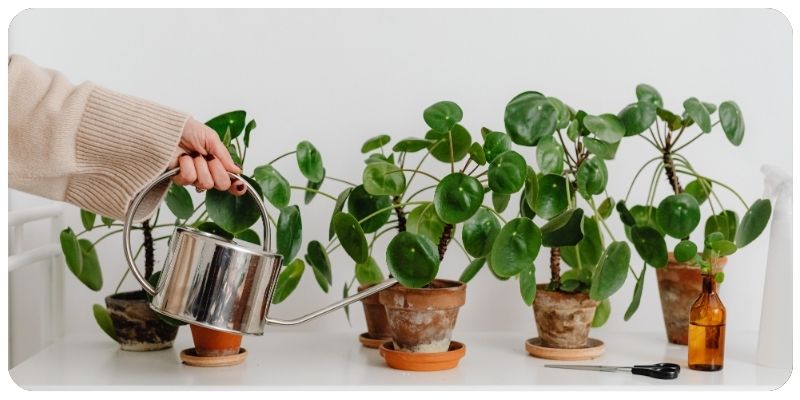
Advanced Watering Techniques for Indoor Plants
Watering your indoor plants correctly is essential for their health and growth, but many plant enthusiasts don't realize that advanced watering techniques can greatly improve plant vitality. In this guide, we will explore various advanced watering techniques to help you optimize your plant care routine and ensure your plants thrive.
1. Understanding Your Plant’s Water Needs
Not all indoor plants have the same watering requirements. Before diving into advanced techniques, it’s important to understand the unique water needs of your plants. Factors like plant species, pot size, lighting conditions, and humidity levels all play a role in determining how often and how much you should water.
Factors Affecting Watering Frequency
- Plant Species: Some plants, like succulents and cacti, require less water due to their drought-tolerant nature. On the other hand, tropical plants like ferns or peace lilies need more frequent watering.
- Pot Size and Material: Smaller pots dry out faster, so plants in small containers may need more frequent watering. Terra cotta pots also absorb moisture, causing the soil to dry out faster than in plastic pots.
- Light Exposure: Plants in bright, direct light tend to use water more quickly than those in lower light conditions.
- Humidity Levels: Indoor environments with low humidity will dry out soil faster. Humidity-loving plants like ferns and calatheas may need additional misting or humidity trays.
2. The Soak and Dry Method
The soak and dry method is a popular watering technique that ensures your plant's roots get a thorough watering while preventing overwatering. This method is ideal for plants like succulents, orchids, and cacti, which prefer to dry out between waterings.
How to Use the Soak and Dry Method
- Water Deeply: Water the plant until water starts to drain out of the bottom of the pot. This ensures that the roots are well-hydrated.
- Let the Soil Dry Completely: Allow the soil to dry out completely before the next watering. You can test this by sticking your finger about an inch into the soil to check moisture levels.
- Repeat: Once the soil is dry, repeat the process. This method prevents root rot by giving the plant time to dry between waterings.
3. Bottom Watering for Indoor Plants
Bottom watering is an effective technique for plants that are prone to root rot or when the soil tends to repel water from the top. This method encourages roots to grow downward, making the plant more stable and promoting healthier growth.
How to Bottom Water
- Fill a Tray with Water: Place the plant’s pot in a shallow tray filled with water. Make sure the water reaches about a third of the way up the pot.
- Let the Plant Soak: Allow the plant to absorb water through the drainage holes for about 20-30 minutes.
- Drain Excess Water: After soaking, remove the plant from the tray and allow any excess water to drain. Avoid leaving the plant sitting in water for too long to prevent root rot.
4. Using a Moisture Meter
For those who struggle with over- or under-watering, using a moisture meter can be a game-changer. Moisture meters measure the moisture content in the soil, helping you know exactly when your plant needs water.
How to Use a Moisture Meter
- Insert the Probe: Gently insert the moisture meter’s probe into the soil at the base of the plant, taking care not to damage the roots.
- Check the Reading: Most meters have a simple scale to indicate if the soil is dry, moist, or wet. Water your plant only when the meter indicates that the soil is dry.
- Adjust Watering: Over time, you’ll learn how often your plant needs water based on the moisture meter’s readings, helping you avoid overwatering or underwatering.
5. Self-Watering Pots
If you’re looking for a low-maintenance solution, self-watering pots are a great option. These pots have built-in water reservoirs that allow plants to absorb water as needed, reducing the risk of overwatering.
Benefits of Self-Watering Pots
- Consistent Moisture Levels: Plants can absorb water when they need it, ensuring consistent moisture without over-saturating the soil.
- Reduced Watering Frequency: The reservoir holds water for several days, meaning you don’t have to water your plants as often.
- Prevents Root Rot: By allowing the plant to take up water at its own pace, self-watering pots reduce the risk of waterlogged soil and root rot.
6. Humidity Control for Indoor Plants
Many indoor plants, particularly tropical species, thrive in higher humidity levels. In dry indoor environments, using a humidifier or placing plants on humidity trays can help maintain the right moisture levels in the air.
How to Increase Humidity
- Use a Humidifier: Place a humidifier near your plants to increase the humidity in the air. This is especially helpful during winter months when indoor air tends to be dry.
- Humidity Trays: Place your pots on trays filled with water and pebbles. As the water evaporates, it increases the humidity around the plants.
- Group Plants Together: Placing several plants close to each other can create a mini-humidity zone, as plants naturally release moisture into the air.
Conclusion
Mastering advanced watering techniques will help your indoor plants flourish and stay healthy. By understanding your plant’s unique water needs, employing methods like bottom watering or using moisture meters, and incorporating humidity control, you can create an optimal environment for your indoor garden. These techniques not only improve plant health but also make plant care more efficient and enjoyable.